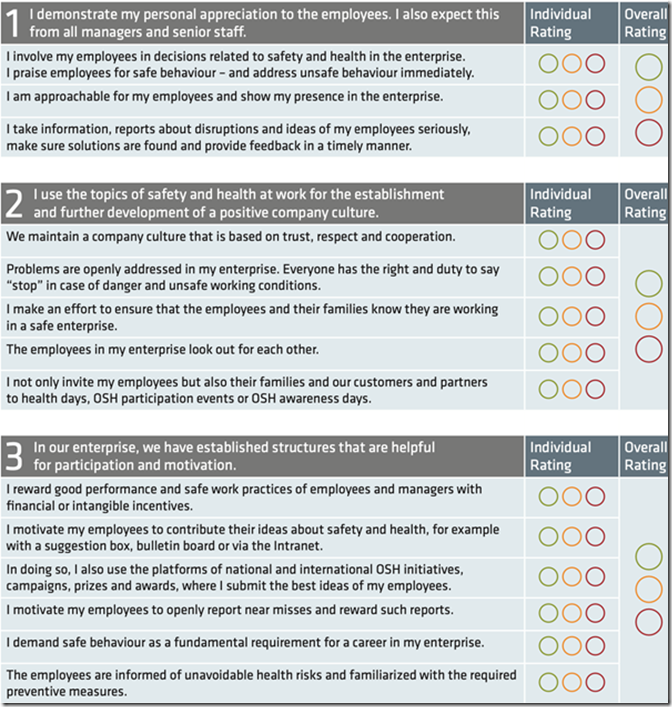The recent invitation to the Zero Conference in Sydney in November mentions the ‘Seven Golden Rules of Zero Vision’ (p.7). What are these special ‘golden’ rules? (https://safetyrisk.net/is-this-your-safety/ ) You can check them out here: https://visionzero.global/guides
The first thing you notice about these so called ‘golden’ rules (https://visionzero.global/sites/default/files/2017-12/2-Vision%20Zero%20Guide-Web.pdf) is that there is nothing visionary. Not much different than claiming ‘difference’ when there is none. Neither do any of these rules provide a ‘method’ to help tackle risk. Most of this stuff is just spin. So, back to the same old systems that don’t work.
The ‘golden’ rules in the guide are: commitment, control risks, develop programs, get organised, look after machines, develop competence and motivate participation.
There is nothing in these rules about: care, helping, community, relationships, moral responsibility to others, personhood, ethics or mutuality.
Indeed, they are the opposite to what is understood as a golden rule.
Whenever you read anything coming from Zero/Safety you need to read what is NOT said much more than what is said. Even then, that doesn’t help because Safety is so good at stating what it is, by what it isn’t. For example, what is a ‘golden rule’ about?
The idea of a ‘golden’ rule is historically about reciprocation and mutuality (https://study.com/academy/lesson/golden-rule-overview-significance.html) and is essentially an ethical saying.
Except when it comes to Safety. In the seven golden rules of zero, there is no mention of ethics, mutuality, relationships or moral responsibility. The seven ‘golden rules’ are all about the prevention of injury and zero accidents.
Whenever Zero drives safety, the focus is always away from persons, ethics and relationships and always about objects and numerics.
Of course, these rules are about duty, the great deontological ‘obligation’ of Safety yet, the spirit of rules should be about persons, social meaning, relationships and mutuality. Rules work when people work in community and mutual responsibility. Policing rules doesn’t work.
In reality, we don’t have rules to reduce accidents, we have rules so people can live socially with each other as they tackle risk. However, this is not how Zero/Safety sees it.
How amusing that global zero has a set of ‘golden rules’ but no stated ethic?
I would love to dissect all 7 golden rules but there is no space here to do so. But, let’s just look at the final one on: ‘Invest in people -motivate by participation’. Let’s look at the checklist provided in the guide:
None of this has anything to do with motivating people to safety nor, does it know what motivation is. The second last item on this checklist really says it all: ‘demand safe behaviour as a fundamental requirement for a career in my enterprise.’
This is what you get when your rules are driven by zero and behaviourism. But this is not about ‘golden rules’ nor does it motivate anyone. There is no mutuality or reciprocation in making demands. Indeed, most of what is in this document is contradicted by all the research into the psychology of motivation (https://www.frontiersin.org/articles/10.3389/fnsys.2014.00194/full ).
The truth is, workers are not motivated by zero (https://safetyrisk.net/first-report-on-zero-survey/ ). Zero is an ideology by a few at the top, who have no idea how to manage fallibility.
The reality of this so called ‘golden rule’ is ‘to invest in people’, not because it is good to invest in people but rather, to reduce in jury rates!
In many ways, zero is a measure of a lack of intelligence of an organisation that is completely out of touch with workers in the front line. This is what these so called ‘golden rules’ manifest.
Zero doesn’t provide meaning, purpose, truth or control and so is not motivational.
No-one at the coalface of risk, drinks the cool aid of zero. Our survey demonstrates that: https://safetyrisk.net/take-the-zero-survey/
If you want to know what does work you can download the free book: It Works, a New Approach to Risk (https://www.humandymensions.com/product/it-works-a-new-approach-to-risk-and-safety-book-for-free-download/). This is a book that is a case study of a large corporation that disposed of zero so that safety could improve (https://safetyrisk.net/moving-away-from-zero-so-that-safety-improves/).
It is a positive constructive practical story about an organisation that uses SPoR methods and safety has improved markedly.




Wynand says
The last question is also hilarious in the context of this discussion “Vision Zero” and “unavoidable health risks” – if that is not an admittance of the futility of Vision Zero, what is? I scanned through the first part of the first document about the “golden rules”, and they are the same as the Du Pont statements of 10+ years ago, only worded a bit differently. Zero change seems to be part of Vision Zero. They claim this is the “new normal” – neither new nor normal.
Rob Long says
It is hilarious but also sad. The absurdities are not apparent to the cult, it’s only for believers. Such is the lack of vision in zero vision.
Matt Thorne says
‘demand safe behaviour as a fundamental requirement for a career in my enterprise.’ OMG!!!
So we need to be a fundamentalist and make demands? No room for error. No room for a conversation, just demands.
Safety would have to be the least scientific practice going!
Rob Long says
Unfortunately, the zero cult can’t look at itself critically and so don’t know how sad all of this is. Just imagine having a strategy in business that doesn’t work and doesn’t get better over 30 years and sticking with it. This happens nowhere else except in safety.